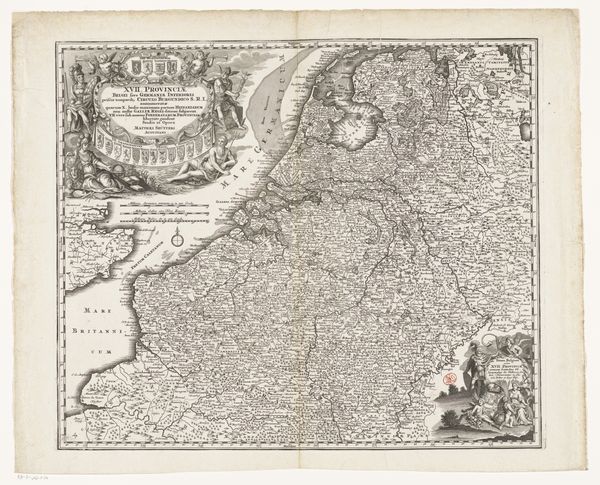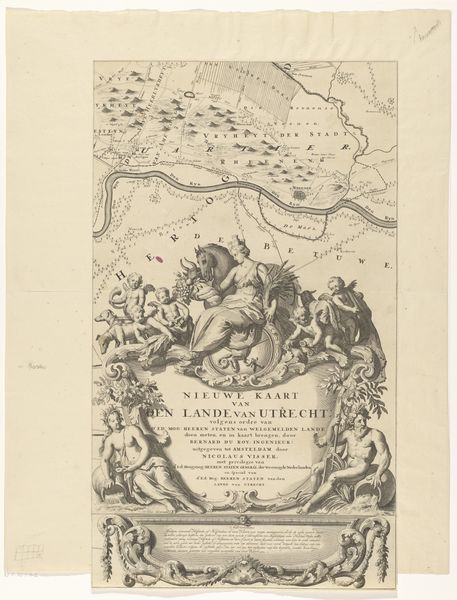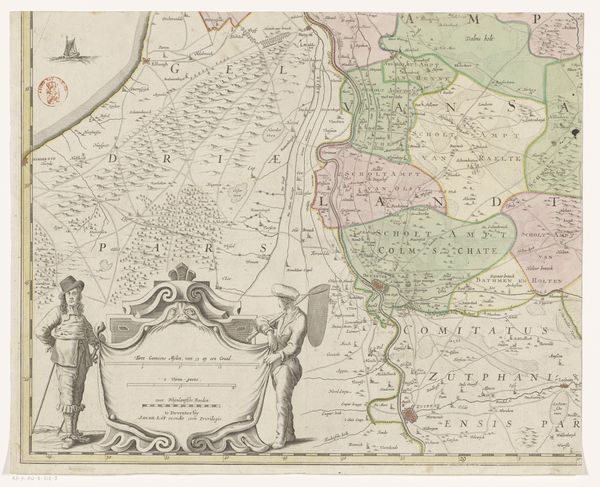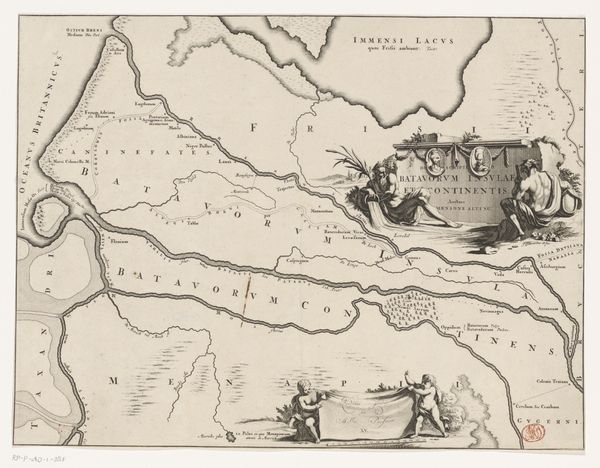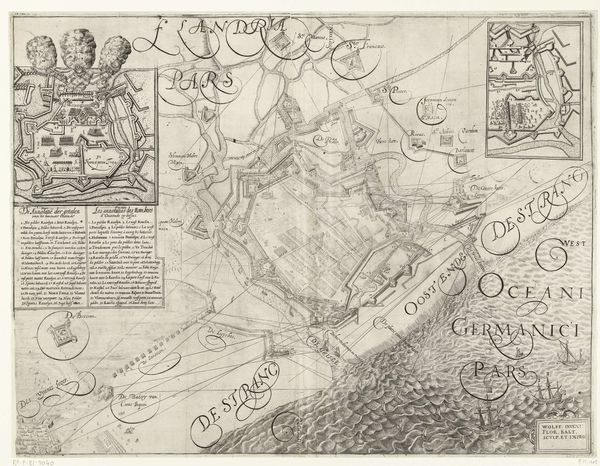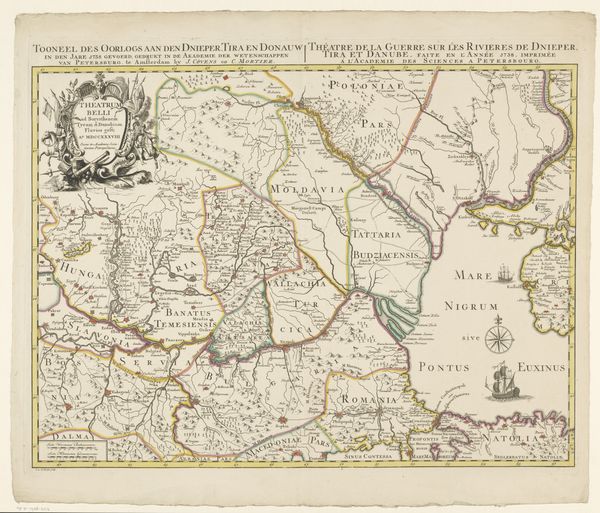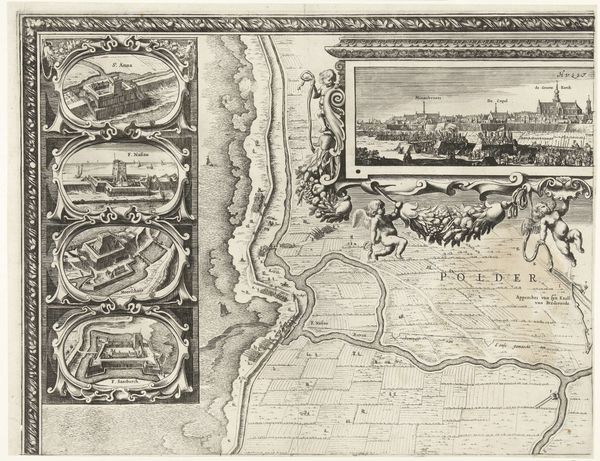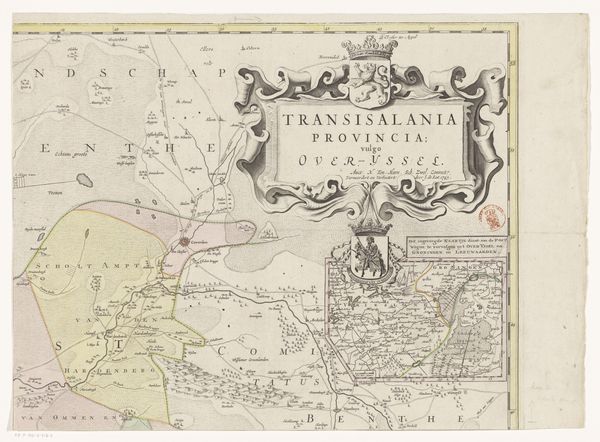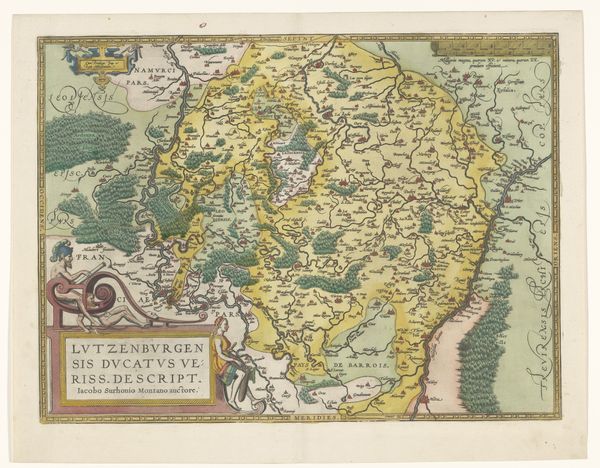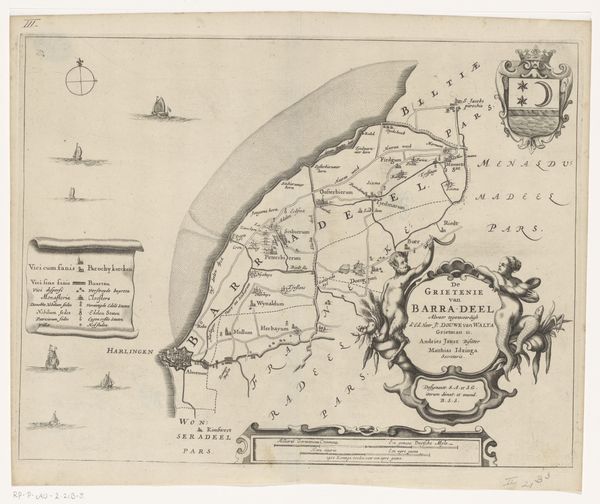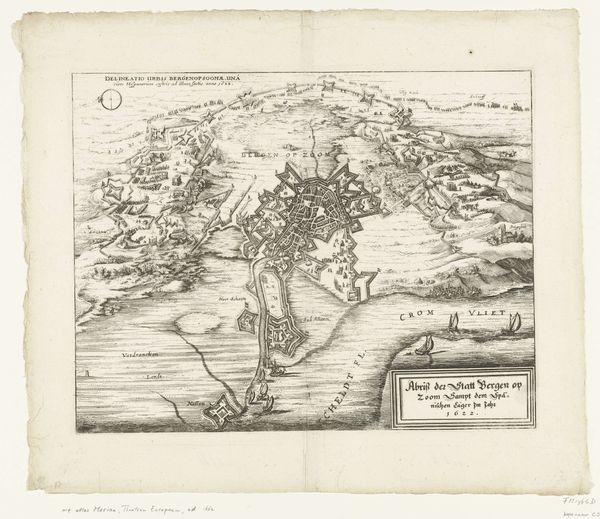
print, engraving
#
allegory
#
baroque
#
pen drawing
# print
#
pen illustration
#
pen sketch
#
pen-ink sketch
#
pen work
#
sketchbook drawing
#
engraving
Dimensions: height 155 mm, width 180 mm
Copyright: Rijks Museum: Open Domain
Curator: What we have here is an engraving called "Putto en engel bij cartouche met dubbele adelaar" by an anonymous artist, created sometime between 1720 and 1740. It seems to be a print, showcasing a double-headed eagle and cherubic figures flanking a cartouche filled with text. It almost feels like a propaganda piece to me, especially with that stern-looking eagle. What’s your first impression? Editor: I’m struck by how much is going on. The combination of these allegorical figures and almost topographical map behind them creates this strange sense of reality and symbolism mashed together. How do you interpret this work within its historical context? Curator: Well, consider the period. This is post-Thirty Years' War, a time when the Holy Roman Empire, which this image references directly in its cartouche, was trying to reassert itself amidst fragmented territories. What do you notice about that double-headed eagle, and its positioning above the text? Editor: It's very prominent and assertive, looking like it’s protecting the text below, almost as though it’s guarding some crucial information or pronouncement. The Holy Roman Empire…Was this trying to unify different regions through visual rhetoric? Curator: Precisely! The text lists different regions or "circles" within the Empire, implying a desired unity and order. Those putti, or cherubs, common in Baroque art, often symbolize divine endorsement. And, see how the weaponry and the barrel are placed; what story do they narrate? Editor: Ah, that the might makes right? Maybe they symbolize both protection and the potential for subjugation if those regions stepped out of line? It's definitely less innocent now. Curator: Exactly. This piece becomes a fascinating artifact reflecting the Empire's aspirations and anxieties. It is definitely intended to create an idea of power. What do you think about how something that looks so artistic on the surface can speak volumes about power dynamics and control? Editor: It's a reminder that art is rarely created in a vacuum. Looking beyond aesthetics unveils how deeply intertwined art, politics, and social structures really are. Curator: Absolutely, and the more we investigate art within its historical, social and political landscapes, the better we understand it!
Comments
No comments
Be the first to comment and join the conversation on the ultimate creative platform.
